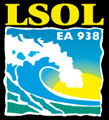Actuellement à l'Université du Kent, GB, sur une bourse IEF Marie Curie
Enseignant-chercheur
Etablissement : Université Bretagne Occidentale
Affectation de recherche : LSOL (Laboratoire de spectrométrie et optique laser)
Equipe(s) : Propagation laser en milieux diffusants



Page personnelle : http://mcbrestinkent.tumblr.com/
• Femtosecond Laser Pulse Metrology (1998 – 2001)
Demonstration of a new approach of a complete characterization for a femtosecond pulse laser beam. The technique is based on a tuneable spectral filter, a spatial shearing technique and a technique for temporal measurement by spectral interferometry. It permitted to measure the spatiotemporal couplings in the focal plane of a microscope objective. This technique was also used to measure the spatiotemporal coupling induced by a third order nonlinear sample.
• Non Linear Optics (1998 – 2007)
(i) Contribution of the development of a third-harmonic generation (THG) microscope. This device was used to study the functional imaging of live biological cells. THG microscopy allows to temporally visualize the release of Ca2+ from internal stores and (or) calcium influx.
(ii) Development of a new formalism based on the propagation of variances in an ABCD optical system to study the nonlinear effect in a Kerr medium. This theory, developed for the first order in the beam power, is applied to modal laser fields (Gaussian, Hermite–Gaussian, and Laguerre–Gaussian beams) and leads to a simple analytical formulation for self-focusing and Z-scan experiments, irrespective of the thickness of the nonlinear medium.
• Snapshot Mueller Matrix Polarimeter (SMP) (2007 to present)
(i) Conception of the SMP based on wavelength polarization coding. This is a compact and fast technique to study polarization phenomena (which can be used to measure the elliptical retardance, elliptical diattenuation and the depolarization).
(ii) Investigation of the dynamics of surface-stabilized ferroelectric liquid crystal cells. A strong correlation between the static (at fixed voltage), dynamic (upon field reversal) polarimetric properties and the texture of ferroelectric liquid crystal cells was established. The retardance parameters are very different between a rooftop/zigzag textured cell and a stripe textured cell. The trajectories of the optical axis of the retarder associated to the cells were plotted. A reversible motion of the smectic layers during switching was used to explain the behavior of polarimetric parameters.
(iii) Diagnostic of liver fibrosis by Mueller polarimetry. An experimental Mueller matrix polarimeter was assembled and used to quantify human liver fibrosis by measuring retardance and depolarization. The former parameter is sensitive to fibrillar collagen, the latter is specifically sensitive to fibrillar collagen from blood vessels which is not significant for liver fibrosis. By using depolarization like a filter, retardance distribution enables to distinguish between disease stages and limit the high degree of observer discrepancy.
